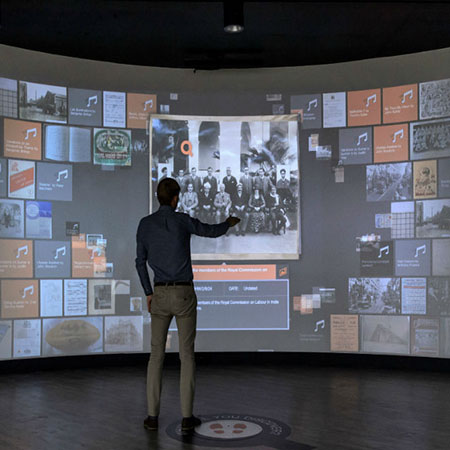What is the future of planning Library spaces in the 21st Century?
Source: British Library, London
Today’s students learn in a dynamic world where information changes and expands as fast as technological innovation. School, College and University library programmes continue to undergo significant changes with the increased importance of technology and evidence-based learning.
The focus has moved from the library as a confined space to one with fluid boundaries that is layered by diverse needs and influenced by an interactive community.
Libraries can no longer be just about “books”; instead libraries need to position themselves as community hubs; providing for general needs as well as endless learning possibilities.
With the introduction of shared services, self-service, merchandising and e-books, the scope for designing academic library spaces is much broader and therefore library planners need to collaborate with key stakeholders to deliver the right environment as well as be creative in finding the funding too.
Extending the Physical with Digital
Generally the debate about the future of libraries centre around paper vs eBooks or physical vs digital, instead of reviewing technology as replacing the traditional, and enhancing the library space for it’s users. Libraries can use a combination of paper books, iPads, and augmented reality to create custom learning environments for students so they can interact with the content, the technology, the space and each other in order to increase their knowledge.
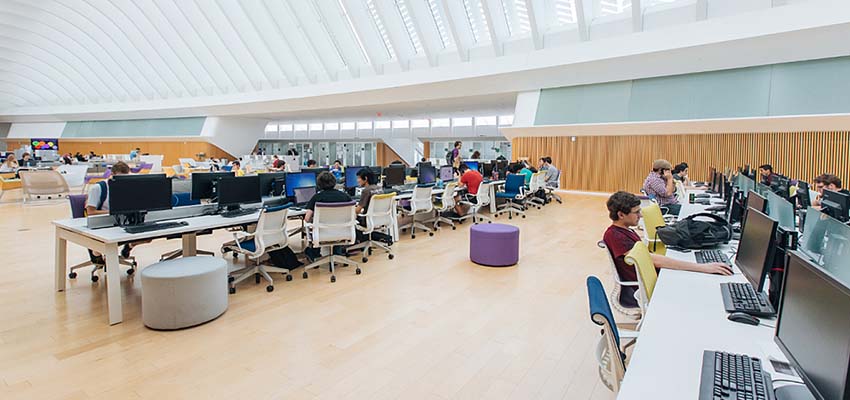
From The Learning Commons to E-Knowledge Commons
A learning commons is a multi-dimensional library space that promotes the personalisation of learning with the integration of new technology, ultimately library learning spaces that connect students to technology, information and co-curricular learning. The emphasis is on holistic learning that may occur both inside and outside of the classroom.
The space is a blend of physical and virtual environments, which allows both teachers and a new generation of students to choose the appropriate space to facilitate a variety of teaching and learning.
The learning commons is both flexible and adaptable to the needs of individuals and groups, both small and large. It is an area where professional development, learning, and research may be nurtured, explored and analysed by offering a variety of different flexible zoned activity hubs.
Technology-rich learning commons need to accommodate multiple uses such as active learning, computing and distance learning with easy transitions for students and teachers.
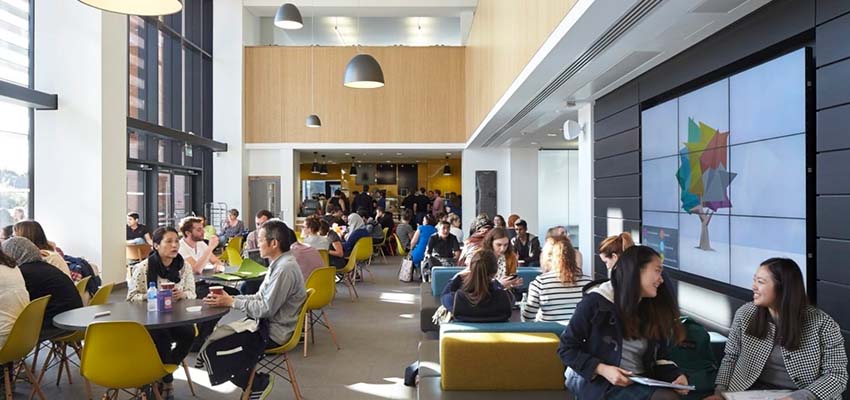
The Augmented Library Space
Like voice user interface design, augmented reality (AR) is in its infancy and new approaches are emerging all the time. But the combination of digital information overlays in physical locations provides huge potential for providing contextual services and support.
Artivive, a platform for artists utilising AR is an example of how new, augmented experiences are being delivered in museum and gallery spaces – and it demonstrates the potential of AR for delivering engaging, story-based experiences in other public spaces.
And it’s not just the dedicated platforms and specialist apps that are exciting about Augmented and Virtual Reality, but the tools emerging that make these experiences available directly via the browser, such as WebAR.
The Digital Library Wall (DLib Wall) at the University of Bedford features 154,000 books on six kilometres of shelves and is open 24/7 during term time!
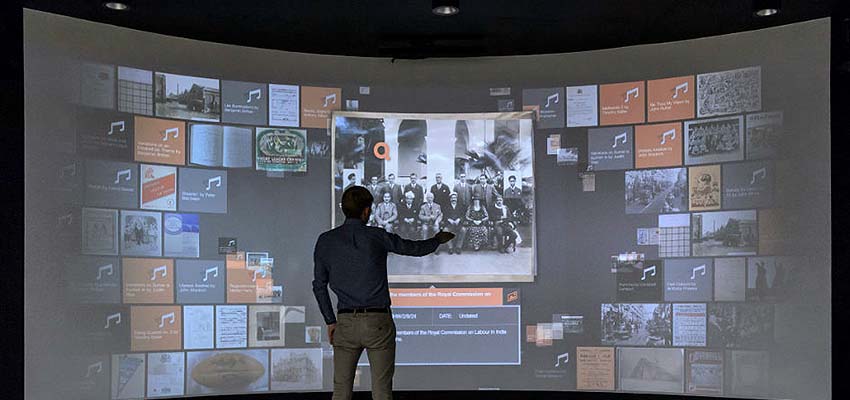
The Twitter Wall at the Museum of London, a geo-tagged real-time analysis of tweets in London, is a good example of an engaging, user-driven display.
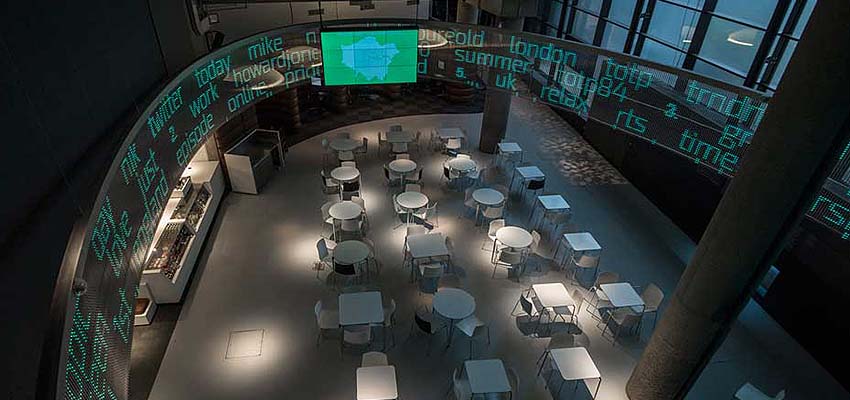
Thanks to affordable computing devices such as the Raspberry Pi, you can now create your own digital display solutions, controlling and customising the information you make available to users and turning any surfaces into interactive ones.
For colleges and universities, in the commons area nobody hushes students who want to talk, food and drink is allowed and collaborative behaviour is encouraged. Cafés and vending machines are the norm and a lot of the commons operate 24/7.
Key Considerations in Designing Learning Centred Libraries
What are the best practices for planning and designing learning-centred libraries that function well today, and are adaptable to future needs, as technology opens new avenues for learning, researching, teaching and working?
- Welcoming: Warm, friendly, intuitive, and inviting spaces within a library, often at the point of entry and in other areas for collaborative learning. Spaces are manifested in breakout areas with soft seating that create the feeling of the library as the “living room”.
- Open: Large areas with unrestricted site lines, in order to minimize physical barriers, remove enclosed rooms or private offices, and emphasize collaboration and information instructional opportunities.
- Transparent: An approach to showcasing learning activities taking place in a space through open concepts, low profile technology and furnishings. Limiting physical barriers that might otherwise obstruct a user’s open view.
- Collaborative: Spaces designed for users to work together, use technologies to access information and share ideas, brainstorm, innovate as well as practise presentations and work together on projects. Collaborative learning spaces are often designed as flexible layouts easily re-configured with moveable furniture.
- Mixed-use space: Where conversation, collaboration, and informal learning are encouraged, facilitated, and expected. A social space is also intended to support academic and leisure activities, events, with cafes/coffee bars and maker spaces.
The Future of Libraries
When every student has the potential to carry a global library on the device in his or her pocket, the role of physical libraries may become even more important, not just a place to house resources, but one in which to create meaning from them. The libraries of the 21st century provide a welcoming common space that encourages exploration, creation, and collaboration between students, teachers, and a broader community. They bring together the best of the physical and digital to create learning hubs. Ultimately, libraries will continue to inspire students to construct new knowledge and meaning from the world around them.
Contact
Are you looking for an inspirational 21st century library? Innova can deliver your project from design through to installation, helping you get the most from your space and budget. Call us on 0161 477 5300 or email hello@innovadesignsolutions.co.uk.

